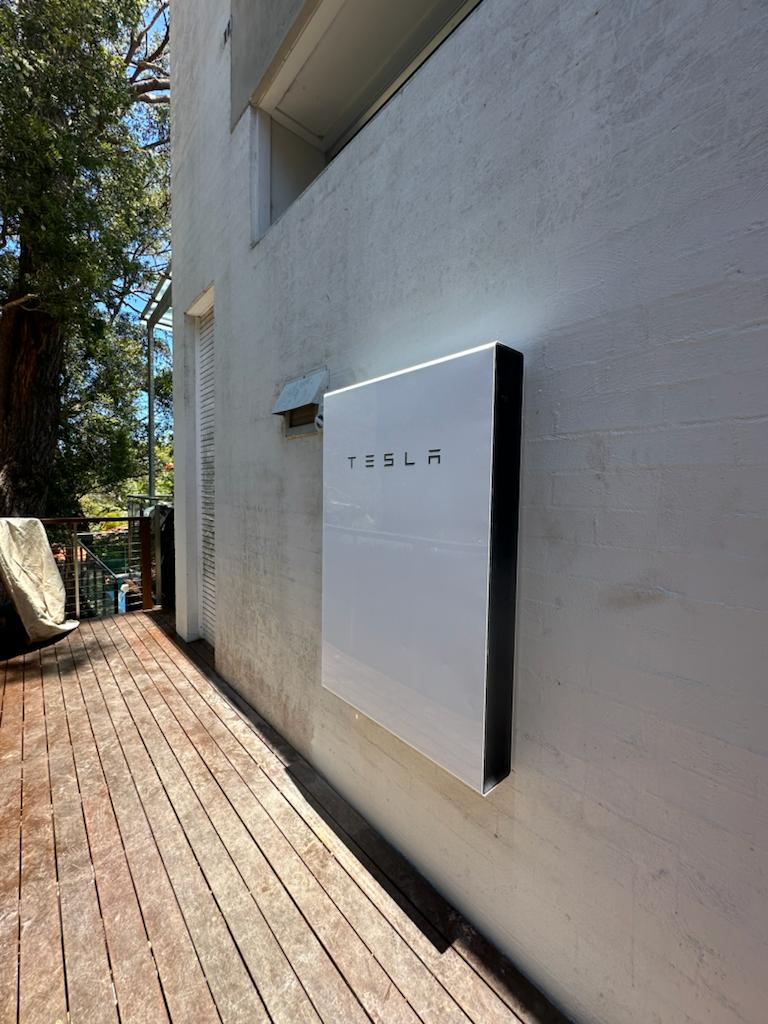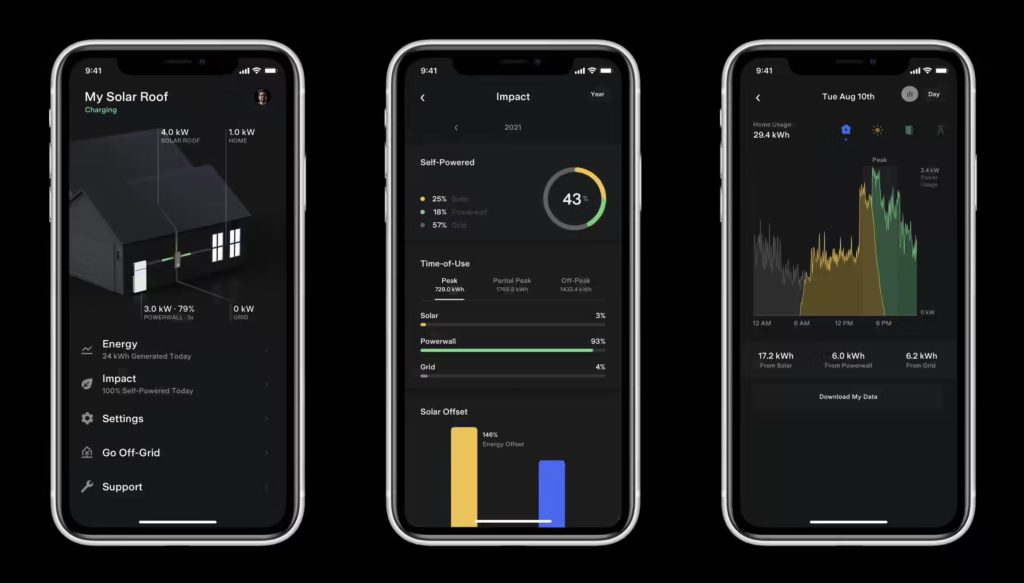Telsa Powerwall 2 Review
I’m sure you’ve heard of the Tesla Powerall 2, if not for their solar batteries for their electric cars. Tesla are incredible marketers, and I’m sure you’ve seen their sleek videos and inspirational talks by Elon Musk.
If you think of a solar battery option for your home, no doubt Tesla Powerall 2 is the first brand that pops into your head and with good reason. As of late 2021 Tesla is the largest company in the world by market capitalisation and let’s be honest, they look pretty cool.

Tesla was started in 2003, and within a year Elon came on board, a man on a mission to single-handedly improve the world. Tesla started with EVs, and that is still their primary focus. However, as EVs require batteries, they have expanded into producing Tesla Powerall 2 batteries too. They’re manufactured in the USA.
In 2015 they released the Powerwall to the world, their first residential and commercial energy storage device. The first Powerwall was a 6.4kWh DC-coupled battery, much like the LG Chem Resu. Being DC-coupled, it needed to work with a hybrid inverter, such as the Sungrow SH5K. However, the first Powerwall has been superseded by the Powerwall 2.

The image above shows a Tesla installation by GI Energy.
The Tesla Powerwall 2 was first released in Australia in 2016 and continues to be one of, if not the most popular storage option installed in Australian homes. It is produced in the Tesla gigafactory in Nevada USA with a local support team here in Sydney. It is an AC coupled battery that can provide backup, blackout protection and off grid capabilities. This allows seamless connection to an inverter (or micro inverter) to retrofit an existing solar installation.
The battery
Tesla is a lithium-ion battery. more specifically the Tesla battery uses an NMC chemistry. When you’re buying a Powerwall 2, what you’re actually buying is hundreds of tiny ‘2170’ cells. These are like AA batteries, and each store 20Wh. The name actually comes from the size – 21mm wide, 70mm tall. This is the same as in their cars – they use thousands of these small cells. However, this is different from most batteries, which use a larger “slab” system – like the battery in your phone or computer.
The Tesla Powerwall provides 13.5kWh of usable energy for your home when you need it most, certainly enough to provide power for an air conditioner or heater. Should you require additional storage a second (or third if you are feeling hungry) unit can be installed if you have enough PV to fill them.
The Tesla Powerwall 2 has a peak discharge rate of 7kW, with a continuous rate of 5kW. This means it’s capable of running your whole house – although you need to be careful, because at 5kW your battery can go from 100% to 0% in under 3 hours if you are using a lot of energy. Many batteries are 3~4kW of continuous output, so if you do have high, vital power demands, the Tesla may be a good option.

Installation
A Tesla Powerwall can be installed inside or outside and either floor or wall mounted. There are restrictions on exactly where this can be on your house as the battery cannot sit in front or below a habitable space. A consultation with one of our experts will advise you of the location that is suitable for your home. The Gateway will be installed to provide backup to your home at the main board, this may also require the use of a remote Neurio meter for rural installations.
Being an AC-coupled battery, a separate solar inverter is needed (e.g. Fronius) if you want to combine the battery with a solar system – so you’d need panels, the Tesla, and an inverter. This is similar to DC-coupled systems, where you have panels, a hybrid inverter, and a battery.
Tesla Powerall 2 App
The app provides real time monitoring of PV generation, battery state of charge and grid energy usage in a really simple and addictive interface. One of the coolest features is ‘Storm Watch’ that automatically charges the Powerwall in the event of a major storm or blackout.

Backup and blackout Protection
The Tesla Powerwall uses the backup Gateway to isolate circuits from the electricity grid and function in off-grid mode. The Gateway automatically detects outages and provides a seamless transition to backup power. This is where Tesla stands out on its own as it can provide 5kW of continuous power to your home, generally more than sufficient for an average home. It can also supply a peak output of 7kW for 10 seconds for those thirsty loads.
Warranty
Tesla Powerwall 2 warranty is 10 years with 70% of the original capacity retained. This applies to self use and backup only. A separate throughput warranty of 37.8MWh applies if the battery is used as part of a VPP plan. Using the throughput warranty this would equate to roughly 80% of the battery being consumed every day of the year, which may not be likely in the real world.
Like most batteries in the market, the Tesla offers a 10-year warranty. After 10 years, it is guaranteed to have 70% of its capacity (i.e. 9.2kWh). The warranty also covers 37MWh of throughput, which is about 3000 cycles. This is enough for a daily cycle for about 8 years, which sounds decent until you realise the sonnen warranty covers 10,000 cycles – up to 3 a day for 10 years. The sonnen will also still be at 80% after 10 years, not 70%.
How does it rank against others?

- Brand. Be the envy of all your neighbours by owning a Tesla. And you can’t deny it’s a good-looking thing.
- Power. It can output up to 5kW of power, which is above-average for solar batteries.
- Quality. Being built in the USA, the build quality of the Powerwall is high. They don’t have years of experience, but the assumption is they will last a long time.
- Size. The minimum size is 13.5kWh, which is larger than many people need. Of course, this makes it expensive.
- Efficiency. The round-trip efficiency is 90%, meaning you lose a reasonable amount of power, compared with others such as BYD (>95%).
Summary:
Tesla Powerall 2 is a great all rounder if you want a solar battery that provides good back up, decent amount of usable energy for most homes and look awesome! It is by no means the only choice though as there are a list of solar batteries that might suit your needs and budget more. Here are some more useful links:










